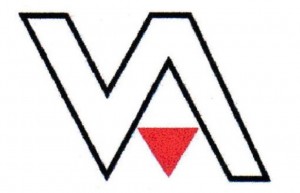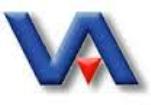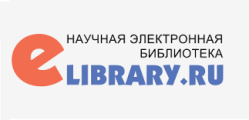Article Design
Design of articles
The formatting of articles must comply with the requirements of scientific and metric databases (russian RSCI, international databases Scopus and Web of Science).
An article submitted to the journal must be completed STRICTLY in accordance with the template with footers (attached).
The article is formatted by replacing the text in the template with your own article text.
The article must meet the following requirements:
volume — 5…15 pages;
abstract — 100…250 words (in Russian and English);
keywords — 5…7 words and phrases (in Russian and English);
bibliography — at least 7…10 sources (in Russian and transliteration).
Structure of a scientific article.
1. Indication of the type of material — Original article.
2. UDC
3. Title of the article (in Russian and English)
4. Full name of the authors (in Russian and English)
5. Place of work, city, country, email of the authors (in Russian and English)
6. Abstract (in Russian and English)
7. Key words (in Russian and English) English)
8. For citation (in Russian and English)
9. Text of the article List of sources (in Russian and )
10. Information about the authors (in Russian and English)
11. Information on receipt of the article (in Russian and English)
Requirements for the design of articles can also be downloaded as files in *doc, *docx format.
Article Template 2023
(download doc-file)
RulesFormatArticles
(download doc-file)
Rules for Design of Literature
(download doc-file)
Original article
UDK 627.8
ARTICLE TITLE
V.A. Ivanov1, M.P. Petrov2
1 Kaliningrad State Technical University, Kaliningrad, Russia, v_ivanov@mail.ru
2 Russian University of Transport, Moscow, Russia, mp_petrov@mail.ru
Abstract. Аннотация на английском языке должна повторять аннотацию на русском языке.Key words: ключевые слова на английском языке.
For citation: Ivanov V.A., Petrov M.P. Article title. Journal of Science and Education of North-West Russia. 2022. V.8. No3. Pp. 00–00 (entered in the journal upon publication)
General requirements. The article is published in the author’s edition; the text of the article must be carefully verified and formatted using Microsoft Office 2003-2007 (text file extension *.doc, *docx). The article file must begin with the last name of the first author (for example, Naumov.doc, Naumov.rar). All submitted articles are checked by the Anti-Plagiarism system. The volume of the article ranges from 5 to 15 pages of text, including figures, tables, a list of sources used and information about the author. The article must include the following mandatory structural elements
1. Indication of the type of material — Original article.
2. UDC
3. Title of the article (in Russian and English)
4. Full name of the authors (in Russian and English)
5. Place of work, city, country, email of the authors (in Russian and English)
6. Abstract (in Russian and English)
7. Key words (in Russian and English) English)
8. For citation (in Russian and English)
9. Text of the article List of sources (in Russian and )
10. Information about the authors (in Russian and English)
11. Information on receipt of the article (in Russian and English)
The text of the article should include:
— Introduction (state of the problem, research objectives);
— Main part – the title is not included in the text. It is recommended to break the main part into sections with names reflecting their content: statement of the problem, research methods, mathematical model, discussion of results, etc.;
— Conclusion (conclusions). Rules for formatting the article: page format: A4; orientation: portrait; align text width; top margins – 2.5; left, right, bottom – 2 cm; font typeface: Times New Roman; size – 12; indented paragraph Tab. 1.27; Line spacing is single.
The table is placed under the text in which a link to it is first given, or on the next page. The word “Table” is indicated once on the left above the first part of the table, followed by the name of the table; Above the other parts they write: “Continuation of the table,” indicating the table number. The table should be inserted automatically (via «Table: Add Table»). Tables can be printed in 12 or 11 font. Links to all tables in the text are required (for example, Table 1, Table 2, etc.). The space before the line with the table name and after the table is 1 interval.
Таблица 1 – Название таблицы
| 1 | 2 | 3 | 4 | 5 |
| 20 | 30 | 40 | 50 | 60 |
| 300 | 400 | 500 | 600 | 700 |
Formulas. All formulas are typed in a formula editor, numbered, and should be referenced in the text in parentheses. Formulas are placed on a separate line after the link, indented two Tavs. The formula number is entered in parentheses and aligned to the right. The space before and after the line with the formula in this case is 1 interval. It is recommended to insert formulas into text using tables with non-printing borders.
| y=(a/b)+x | (1) |
where a – an empirical coefficient; b – empirical coefficient; x – a variable value.
When typing formulas, it is recommended to use the following font sizes: main – 12; large index – 8; small index – 6; large symbol – 16; small character – 12. Font typeface Times New Roman.
It is recommended to write division in the form — a/b. Individual elements of mathematical formulas included in the text are typed according to the rules given above.
Brackets in formulas and text should be used in the following order — first round ( ), then square [ ], then curly { }: { [ ( ) ] }. For example: {c+d[a+(b/x)]}/k.
Quotation marks: external ones, including those for English words, must look like “….”; internal «….». For example: “… the word “word” word.”
Drawings. Color and black-and-white clear drawings made using computer graphics or scanned are allowed. Drawings typed in Word (insert →shapes) are not allowed. All figures must be numbered (Figure 1, Figure 2, etc.) and have captions. The figure number and caption are located below the figure. All symbols in the figure must correspond to the symbols in the text. References to all figures in the text are required (for example, Fig. 1, Fig. 2, etc.). Photos must be taken from a good negative with a contrast print. Padding before the drawing and after the caption – 1 interval. It is recommended to insert figures with captions into the text using tables with non-printing borders.
Figure 1 – Figure caption
Links to all sources listed in the text of the article are enclosed in square brackets, for example: [2], [4-7], [1, 18, 25]. Sources in the bibliography are numbered and arranged in the order of their mention in the text (in order of citation).
Chemical symbols (Ag, Cu) are typed in straight font.
Units of physical quantities should be given in the international SI system according to GOST 8.417-2002. GSI. Units of quantities.
Abbreviations. All abbreviations in the text must be deciphered. Only generally accepted abbreviations for the names of measures, physical, chemical and mathematical quantities are allowed.
If the article has one figure or one table, they are not numbered. I
t is not allowed to end an article with a figure or table.
All figures and tables should be located in the center of the typesetting page.
The list of sources must contain at least 7…10 scientific publications (articles, monographs, etc.), of which at least 40% must be published in the last 10 years. It is recommended to refer to articles indexed by Web of Science Core Collection, Scopus, Russian Science Citation Inde, included in the RSCI core, and the list of Higher Attestation Commissions. Sources of other types (GOSTs, technical data, etc.) are not taken into account in the number of scientific publications.
Such sources must be referenced directly in the text of the article (in-text bibliographic link). For example, the characteristics of the hydraulic drive used are regulated by GOST 12445-80 “Displacement hydraulic drives, pneumatic drives and lubrication systems. Nominal pressures.» Links to all sources given in the list in the text of the article are enclosed in square brackets, for example: [2], [4-7], [1, 18, 25]. Sources in the bibliography are numbered and arranged in the order of their mention in the text (in order of citation).
LITERATURE
1. Sidnyaev N.I. Theory of experimental design and statistical data analysis. Moscow: Yurayt, 2014. 495 p.
2. Optimization methods in agricultural research / Ed. edited by S.M. Pavlova. Moscow: Progress, 2009. 207 p.
3. Khabrat N.I. Analysis of forces in a roller overrunning clutch // Tractors and Agricultural Machinery, 2010. No. 10. P. 53–56.
4. Petrov O.V., Smirnov S.I. Design of straight gear profiles for fine-module ratchet teeth // Current problems of modern mechanical engineering: proceedings of the International Scientific and Practical Conference. Tomsk: TPU, 2014. pp. 284–288.
5. Petrov O.V. Freewheeling mechanisms of non-friction type // Bulletin of science and education of the North-West of Russia. Kaliningrad, 2016. T.2. No. 1. [Electronic resource]. Access mode: http://vestnik-nauki.ru/wp-content/uploads/2016/01/2016-№1-Petrov.pdf.
6. Patent 2340821 RF IPC F16 J15/53. Magnetic fluid shaft seal / S.M. Perminov, 2008. Bulletin. No. 34.
7. Designer’s Handbook [Electronic resource]. Access mode: http://www.spravconstr.ru (access date 01/01/2023
REFERENCES
- Sidnyaev N.I. Teoriia planirovaniia eksperimenta i analiz statisticheskikh dannykh [Planning theory of experiment and analysis of statistical data]. Moscow: Yurajt Publ., 2014. 495 p.
- Metody optimizatsii v sel’skokhozyaystvennykh issledovaniyakh. Pod. red S.M. Pavlova [Optimization methods in agricultural research. Ed. by S.M. Pavlov]. Moscow: Progress Publ., 2009. 207 p.
- Khabrat N.I. Analiz usiliy v rolikovoy obgonnoy mufte [Analysis of forces in the roller overrunning clutch] Traktory i sel’khozmashiny, 2010. No. 10, pp. 53–56.
- Petrov O.V., Smirnov S.I. Proektirovanie pryamolineynykh zubchatykh profiley dlya melkomodul’nykh khrapovykh zub’ev [Design of straight tooth profile for fine-module ratchet teeth]. Aktual’nye problemy sovremennogo mashinostroeniya: trudy Mezhdunarodnoy nauchno-prakticheskoy konferentsii. Tomsk: TPU, 2014, pp. 284–288.
- Petrov O.V. Mekhanizmy svobodnogo khoda nefriktsionnogo tipa [The one-way clutches of non-friction type] Vestnik nauki i obrazovaniya Severo-Zapada Rossii. Kaliningrad, 2016. V.1, No1. Available at: http://vestnik-nauki.ru/wp-content/uploads/2016/01/2016-№1-Petrov.pdf.
- Perminov S.M. Patent RF 2340821. IPC F16 J15/53. Magnitozhidkostnoe uplotnenie vala [Magneto-liquid Seal], 2008. Byul. No34.
- Spravochnik konstruktora [Handbook of designer]. Available at: http://www.spravconstr.ru. (date accessed: 01.01.2023).
Information about the authors is given after References in tabular form in Russian and English. Indicate your full name, academic degree and title, place of work, address, email.
| ИНФОРМАЦИЯ ОБ АВТОРАХ | INFORMATION ABOUT THE AUTHORS |
| Иванов Владимир Александрович – доктор технических наук, профессор, Калининградский государственный технический университет (236000, Россия, г. Калининград, Советский пр-т 1, e-mail: v_ivanov@mail.ru) | Ivanov Vladimir Alexandrovich – Dr. Sci. (Eng.), Professor, Kaliningrad State Technical University (236000, Russia, Kaliningrad, Sovetsky ave. 1, e-mail: v_ivanov@mail.ru)
|
| Петров Михаил Петрович – кандидат технических наук, доцент, Российский университет транспорта (127994, Россия, г. Москва, ул. Образцова, д.9, e-mail: mp_petrov@mail.ru). | Petrov Mikhail Petrovich – Ph.D. (Eng), Associate Professor, Russian University of Transport (127994, Russia, Moscow, Obraztsova str., 9, e-mail: mp_petrov@mail.ru). |
Статья поступила в редакцию 00.00.2022; одобрена после рецензирования 00.00.2022, принята к публикации 00.00.2022 (проставляется в журнале при публикации)
The article was submitted 00.00.2022; approved after reviewing 00.00.2022; accepted for publication 00.00.2022 (entered in the journal upon publication).





